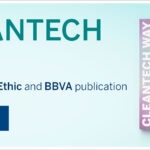Green is back in fashion
Clothing is much more than something to keep us warm: it is a powerful expression of our identity, culture and ideas. Brands are becoming increasingly aware of the importance of creating quality clothing that is not only attractive, but also sustainable, and that showcases their commitment to the planet and the future.

The relentless consumption of natural resources, including water, along with greenhouse gas emissions are some of the biggest challenges now facing the fashion industry. For example, the European Union’s study What if fashion were good for the planet? estimates that around 2,700 liters of water are needed to make a single cotton T-shirt. Meanwhile, according to a 2024 McKinsey report, the global fashion industry accounts for between 3% and 8% of total greenhouse gas (GHG) emissions, and the industry’s emissions are expected to increase by around 30% by 2030 if no further action is taken.
Against this backdrop, the industry must look to transform its production model to comply with national and international agreements promoted in recent years. At the global level, this should be achieved through the Fashion Industry Charter for Climate Action, approved at COP24 and updated at COP26 in 2021, whereby major fashion brands pledged to reduce their emissions by 30% by 2030 (compared to 2015 levels) on the path to becoming net zero by 2050. On a regional scale, in Europe the EU Strategy for Sustainable and Circular Textiles aims to make all textile products durable, recyclable and environmentally and socially responsible by 2030. This strategy also envisions the possibility of prohibiting the destruction of unsold products and fostering clearer information on textiles through the creation of a digital product passport.
The transition toward circular fashion
“In our current economy, we extract materials from the Earth, manufacture products from them, and ultimately discard them as waste. In other words, the process is linear. Conversely, in a circular economy we stop producing waste right from the outset,” explains the Ellen MacArthur Foundation. The creation of a garment begins with the raw materials used to make it —which can be natural (such as cotton or linen), artificial, where natural raw materials are transformed into fibers through chemical processes (such as viscose) and synthetic, the most polluting throughout the product’s useful life as they are mostly composed of petroleum derivatives (such as polyester or elastane)— and their useful life cycle ends when such garments are thrown away. The circular model redesigns our production systems to reuse materials, minimize waste and give enough time and space for nature to regenerate before extracting more raw materials. For this to succeed, we must recycle garments, either by giving them a second life (second-hand clothing) or by disposing of them and using the materials to create new clothes.
The Ellen MacArthur Foundation has been a key player in promoting this approach through the Make Fashion Circular initiative, which works alongside different brands, manufacturers and industry professionals to investigate and champion the use of sustainable materials, the collection of used clothing and the implementation of processes that extend the useful life of garments. But what does circularity in textiles involve exactly?
At Mango, a leading global fashion group and one of the first companies to set up a sustainability department 20 years ago, they explain that it all starts with a design based on easily recyclable and durable garments that also happen to generate the smallest amount of waste. For a garment to be considered easily recyclable it must be monomaterial (prioritizing the use of a single fiber) and reduce fittings to a minimum, so that at the end of its life it is easier to separate the materials and recycle them. On the other hand, materials selected for their durability and reinforced construction ensure that garments remain in good condition over time. “Quality and durability go hand in hand,” they explain.
So, how can consumers identify which garments are sustainable? According to Mango, it is important for citizens to start learning about all these attributes that are linked to this more sustainable fashion model and lower impact products. Clear and complete labeling is an absolute must. “At Mango we have introduced a QR on our labels that takes you to our website, and that’s where all the information is readily accessible,” they explain.
Mango: “For a garment to be considered easily recyclable it must be monomaterial and reduce fittings to a minimum, so that at the end of its life it is easier to separate the materials and recycle them”
Scientific innovation is also key to the development of circular production models. For example, Infinited Fiber has developed a process to recycle used textile fibers, even those that are of poor quality, and transform them into a new high-quality fiber known as Infinna™, which is already being used by various big brands, including the likes of Adidas, Patagonia and Calvin Klein.

From earth to hangar: growing materials to reduce the environmental impact
Creativity and science have come together to produce some welcome results, not only in helping to form a complete circle in the life of a product (through formulas such as recycling), but also by developing new materials. Like those created by MycoWorks, a biotech company founded in 2013 by Philip Ross and Sophia Wang, two artists and pioneers in the field of biomaterials. As they explain at MycoWorks, “the company was created from Phil Ross’s deep understanding of mycelium, an abundant and complex organism and a structural marvel.” Ross began to cultivate this fungus for use in his sculptures in the 1990s discovering in his experimentation its versatility in shape, texture and color.
Meanwhile, Sophia Wang, the daughter of two molecular cell biology researchers, was formally trained as an artist and writer, but always showed a keen interest in nature’s living systems. While writing her doctoral dissertation on poetry, Wang worked with Ross on a series of public programs exploring the culture and history of bioreactor design. As interest in Ross’s creations began to grow worldwide and opportunities arose to collaborate with brands seeking innovative materials, Ross and Wang decided to set up a company.
Thanks to Ross’s in-depth knowledge of mycelium, they developed Fine Mycelium™: a system for manipulating mycelium during its growth to create unique, attractive, resistant and durable biomaterials; a concept that has captivated companies from various sectors, including Hermès, Ligne Roset and General Motors. After years of research, this system has culminated in a first product for the luxury sector: Reishi™, an improved version of mycelium similar in appearance and texture to animal hide, but with a much smaller environmental footprint.
Its low-carbon footprint is due in part to its passive growth process: mycelium does not require additional food, water, light or other inputs to support its growth. Even more, the Fine Mycelium™ process allows for a much cleaner, shorter, streamlined “re-tanning process” jumping straight to dyeing and finishing without the use of chrome, cutting water and chemistry usage comparatively to traditional processes.
According to the founders of MycoWorks, Reishi™ ushers in a new era in sustainable design, allowing materials to be customized from the growth process, thus offering unparalleled levels of control over a natural material, available at scale.
As Matt Scullin, CEO of MycoWorks, has pointed out on several occasions, brands are calling for new materials with a lower environmental impact to deliver on their climate commitments and, at the same time, the appetite for fashion and luxury requires new sources of materials to drive growth. In other words, society is demanding high quality products that also happen to be sustainable.
